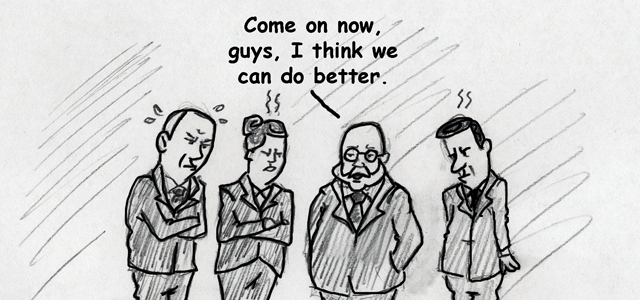That’s Debatable: Whither the 1-and-Done Rule?
Posted by rtmsf on November 17th, 2009Recently Buzz Bissinger wrote an op-ed in the NYT about the 1-and-Done Rule in college basketball. He feels that he has been duped by David Stern and the NBA for selling him on warm and fuzzies like player maturity and higher education when, in reality, the NBA just wanted the free marketing and player development that college hoops provides. John Gasaway at Basketball Prospectus responded to his piece by saying that the NBA age-limit rule was always about the gift-wrapped marketing of college stars like Kevin Durant and Derrick Rose for the NBA, and that’s all it was ever about. Well, duh, but it brings us to this week’s topic, as the debate rages on among the hoops cognoscenti.
This week’s topic: What should be done, if anything, about the 1-and-Done Rule?
nvr1983 – editor/contributor, RTC.
I am torn on this issue. As much as I love seeing the 1-and-Dones in a college uniform, I do miss the continuity of college basketball from the early 1990s. It used to be fun to watch players develop from talented but inconsistent freshmen into steady seniors. Players always left early, but it was usually after their junior year and even then it was typically only great NBA prospects, not borderline NBA guys who are hoping they can dupe some NBA team into giving them a $2-3 million contract, which based on what I’ve seen from NBA players in the news lately should last them all of a year. From a political and legal perspective I think the rule is a travesty as there is not a good reason for a player to have to spend one year in college particularly at an age that they can vote (sometimes making horrible decisions) and go to war (and potentially die). Still it is the NBA’s product so they can decide what to do, but I think they should either go all-in (4 years of college) or have a laissez-faire approach (let the NBA teams decide who they want).
john stevens – editor/contributor, RTC.
The statistics in the Bissinger piece show that the One Year Rule that keeps high school prep stars from directly entering the NBA draft has had no real positive effects for the kids themselves, but it does help the colleges (a year of service by star players) and the NBA (a year of free marketing of these possible eventual stars). If we really want to make rules in the kids’ best interests, I think you have to either: 1) let them play straight out of high school if they want to take that risk, or 2) if they enroll in college, have them stay a minimum of three years. Staying three years will help develop “mid-level” players that need the time in college to improve, and it will result in more college degrees for these kids, since some players do fulfill all the requirements for graduation within three years. If unfinished, players who complete the three years would then find it easier to finish degrees after or even during their professional careers, or realize how much they love the college experience and stay for the fourth year in order to win a title, finish a degree, or both.
zach hayes – editor/contributor, RTC.
For the college game? It’s tremendous. For the kids involved? I’d be more than a little bit ticked off if I were in their shoes. But since I’m not, and a college basketball fan through and through, I love the rule where every high school player must spend a year in the college ranks. Why wouldn’t I? We never would have been able to see Kevin Durant work his magic at Texas, or Michael Beasley shatter Kansas State and Big 12 records, or Kevin Love lead UCLA to another Final Four. What fan of our game isn’t excited to see John Wall or Derrick Favors toe the hardwood this season in the intense atmosphere of college basketball? While I truly feel that high school prospects should be able to enter the NBA Draft without going to school (it’s fair, admit it), let’s just say I’m not complaining. The college game thrives when the ultra-hyped high school seniors shine on the collegiate stage, even for one year. And any rule that helps college basketball I’m all in for. The riches of the NBA can wait.
rtmsf – editor/contributor, RTC.
After KG opened the preps-to-pros floodgates in 1995, every borderline prospect with a broken jumper and a lack of sense of the incredible skill level required for the NBA were coming out. But even beyond the HS stars, it began infecting the college game to the point where bench players on not very good teams thought they too were ready for the L. A free market dictates that a person has a right-to-work, but the NBA has never been a truly free market (otherwise, teams could simply sign players at any time without regard to age, salary cap or the equitable distribution of talent known as the draft). The NBA sets the rules for its employees, and David Stern has decided he’d rather have marketable stars who are further along the development curve than the raw products they were once getting. I can buy and support that line of thinking, but it also needs to go one step further. The rule needs to expand to two years (age 20). The way it’s currently set up is just too disruptive for the schools involved with these players, and the development between Y1 and Y2 of college is often substantial (Blake Griffin,anyone?).










































